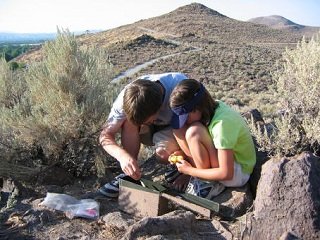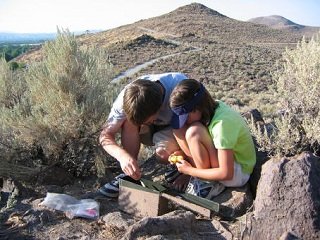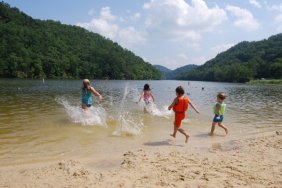 When most people think of the outdoors, they think of hiking or camping, or maybe even kayaking and fishing. However, there are a multitude of other outdoor activities that often go overlooked and I feel like many are missing out on the fun and excitement that these activities have to offer. Today, I wanted to give you a crash course in one such activity: geocaching. Keep reading to learn the basics of this treasure hunting experience and immerse yourself on the outdoors in a new way!
When most people think of the outdoors, they think of hiking or camping, or maybe even kayaking and fishing. However, there are a multitude of other outdoor activities that often go overlooked and I feel like many are missing out on the fun and excitement that these activities have to offer. Today, I wanted to give you a crash course in one such activity: geocaching. Keep reading to learn the basics of this treasure hunting experience and immerse yourself on the outdoors in a new way!
Geocaching is basically a treasure hunting game that uses GPS technology to locate caches, which are containers hidden throughout in the world. These containers, or “caches,” can be of any size or form, and can hold anything you want. The only rules associated with the contents of the caches are that they can’t contain anything dangerous and they must contain a log book, so discoverers can sign in when they’ve located one.
Locating a cache requires you to know where it is. This isn’t easy, though, as you’ll only have the longitude and latitude coordinates of the cache to work with. You’ll need to enter these coordinates into a GPS unit and go on an adventure in order to find the cache. There are websites and communities dedicated to geocaching, such as www.geocaching.com, where you can find coordinates for caches near your home. This is great for those just starting out. Usually, the coordinates fall within several yards of the cache itself, so you may have to look in trees or bushes near the endpoint. Once you find a cache, you sign the log book and exchange or trade items if you want. Just be sure to either trade up or at least leave something of equal value if you decide to trade items. Also, never leave food in a geocache.
It doesn’t take much to start geocaching. Of course, you’ll need access to the internet in order to obtain the coordinates of the caches themselves. You don’t need a GPS, but it definitely makes things easier, as using a map can be difficult for some, and is more vulnerable to human error.
Among the geocaching community, there is a level of etiquette that participants should always take measures to adhere to. For instance, since geocaching is an outdoors activity, you should be sure never to damage or disturb the environment by burying a cache, permanently damaging the surrounding environment, or trespassing on someone’s property.
If you want, you can even hide your own geocache for others to locate. Planning is important when hiding a cache, as you’ll need to determine what kind of container to use, get permission to place it in a given location, and then log the coordinates on a geocaching site. Geocaching is a great activity for friends and family to enjoy on a day when they have spare time, and is a creative way to experience the outdoors. Be careful, though; it can become addictive and it’s not uncommon for geocachers to travel across the country to locate caches!








